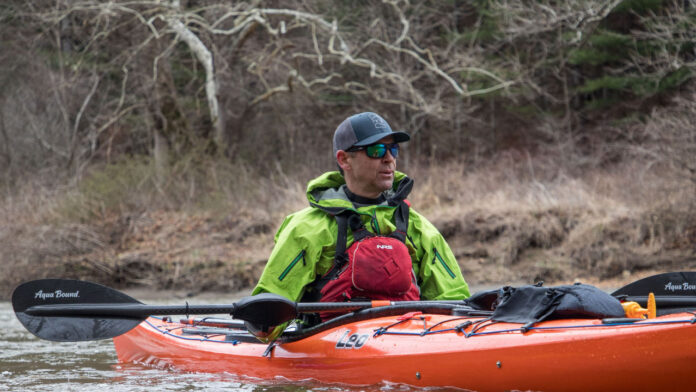Dressing for cold water kayaking can be more than just a comfort issue. It can, for a number of reasons, be a matter of safety too. That is why today we will talk about the best gear for spring paddling.
Why is Clothing Choice a Safety Issue?
Well, very simply, because of hypothermia and hyperthermia. Hypothermia is when your body temperature drops too much because of the cold and hyperthermia is when it rises too much from the heat. You need to protect yourself from both of these conditions.
And there are three factors that really dictate how at-risk you are. These are:
The water temperature
This has the biggest impact on your safety on the water. In particular, you need to worry about hypothermia. If the water is cold and you end up submerged in it, you can freeze. Your body temperature can drop too much and it can be life-threatening.
Air temperature
Air temperature can go either way; it can cause both hypo and hyperthermia.
The type of paddling you are doing
This can result in both. In rough, but very warm conditions where you are required to be very active, your body temperature can rise too much. But more so hypothermia is a concern when kayaking in cold air and being doused in water.
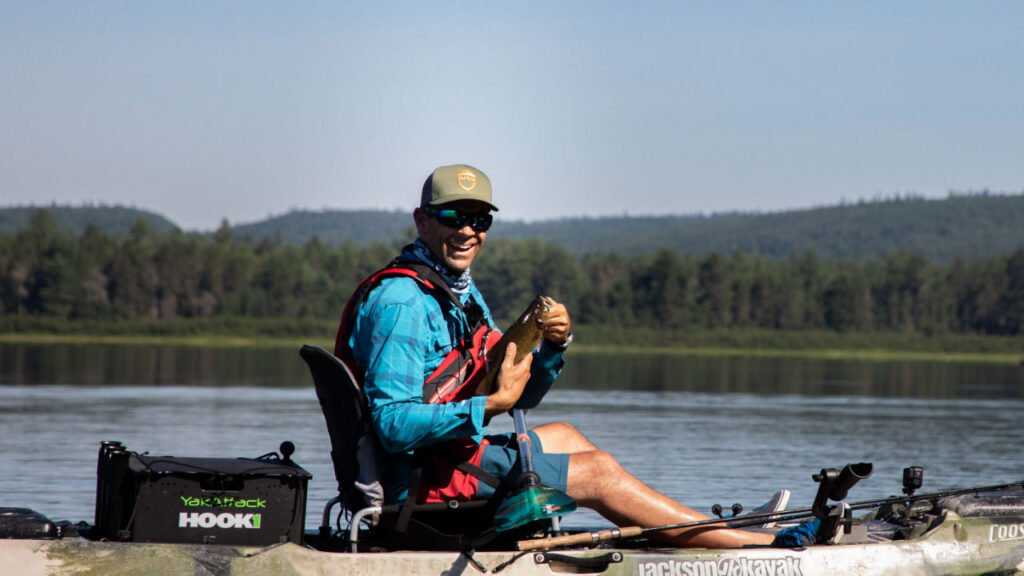
Warm Water Kayaking Gear
When kayaking in hot weather and conditions the biggest concern for most people is getting sunburnt or suffering from over heating. But hyperthermia is something that does need to be on your radar. The first time I saw how debilitating hyperthermia was has stuck with me ever since. It really is terrible.
Fortunately, it is very easy to avoid hyperthermia when kayaking because you are on the water. By splashing yourself or taking a swim, drinking water, and protecting yourself from the sun you can keep hyperthermia at bay.
A couple of key pieces of gear that I wear when I am in really hot conditions include the following:
A hat is important for hot days
You need to protect yourself from the sun. In Dominica this winter, when kayak surfing, I got reminded of this. I was slammed by a wave, my hat went flying and I didn’t see it again. After only 15 minutes in the hot Caribbean sun, I realise that not having a hat wasn’t just an inconvenience, it was a real safety issue. So we had to cut our day’s plans short. Hats can really be a key piece of safety gear.
NRS Silk Weight Shirt
I often wear this silk-weight top. It is a really light top, it protects you from the sun and has a little bit of moisture wicking. Therefore it provides a cooling effect on the body when paddling.
This top is very similar to a loose-fitting rashguard, which can be another great thing to wear in the heat if you prefer having more form-fitting clothing. Guide shirts can also work well in the heat.
Surf shorts
This is self-explanatory, these are lightweight and great for swimming. Important warm water kayaking gear, because you can cool off with a swim!
A simple water shoe
A simple water shoe provides protection for my feet, fits in the kayak very well and drains water, and dries quickly. It also isn’t too hot.
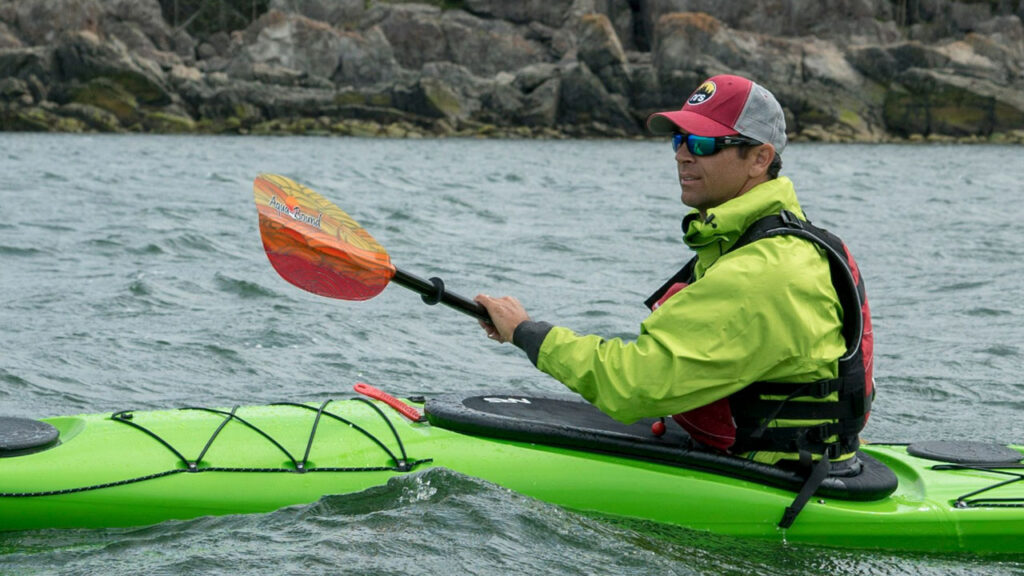
Cold Water Kayaking Gear
This is a bit of a different story. You have to take more care because if you are on the water and get cold, you can’t just splash yourself with water or take a swim to warm up.
Hypothermia can very quickly escalate. The biggest danger is finding yourself swimming. When you are submerged in water, it will suck the heat from your body. The colder the water is, the quicker it will suck the heat from your body. If you are in the water under 40°F (10°C) hypothermia can literally set in in a couple of minutes or less if you are not protected.
So what you wear really depends, first and foremost, on the temperature of the water. But also, if you do end up going for a swim, how long will you be submerged in the water? If you are paddling close to a shoreline where it is easy to get out of the water and get back to your vehicle very quickly, it is a very different situation to if you are paddling offshore, with a long swim back.
Similarly, your skill level and expertise, and the skill level of your group, all make a difference. Are you confident that you can get back into your boat easily if you swim?
There are lots of factors that dictate how protected you need to be, but it really only changes your protection a little bit. Ultimately, when paddling in cold water you need to dress in a way that means you can comfortably survive being immersed in the water for an extended period of time. That means erring on dressing on the warmer side of things.
There are two real things to consider when dressing for cold conditions:
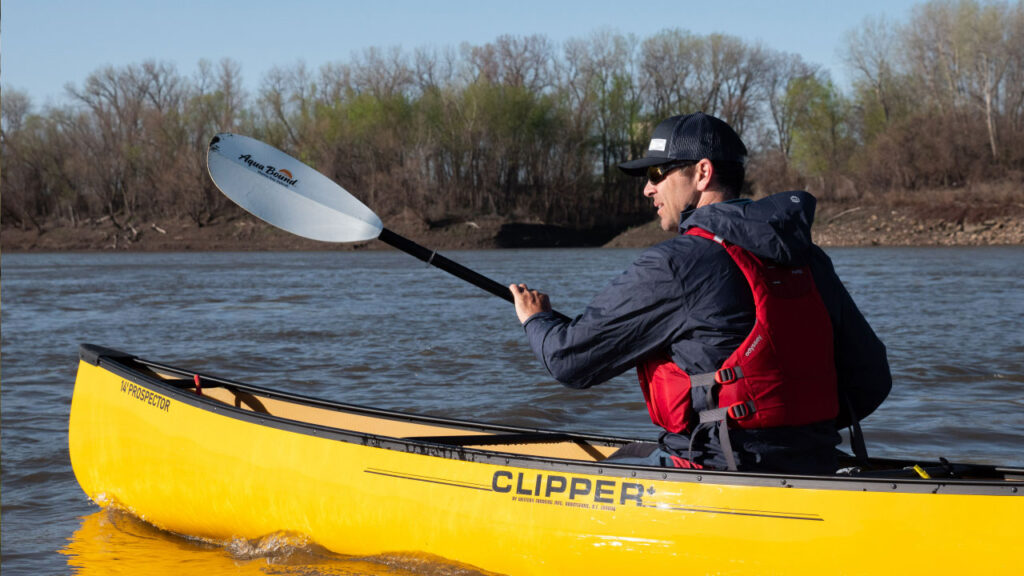
The Outer Shell
This is going to cut the splashing and wind. Or it will provide a completely dry interior. That is the big difference between splash wear and dry wear.
Dry suits, or dry tops, are the most protective gear. Dry tops have latex gaskets around the neck and at the wrists. Whereas a dry suit is a full-body suit that you zip yourself into and are fully protected. You’ve got latex gaskets at the neck, wrists, and feet. You are going to stay bone dry.
If it isn’t that cold, you might go for a paddling top that doesn’t have gaskets around the neck and wrists, just neoprene. This isn’t going to be as waterproof. But for a full day of paddling it will be more comfortable and it is certainly less expensive.
For even warmer temperatures, you can use even more simple paddling tops or splash tops. Even a simple raincoat might do the job, depending on the conditions.
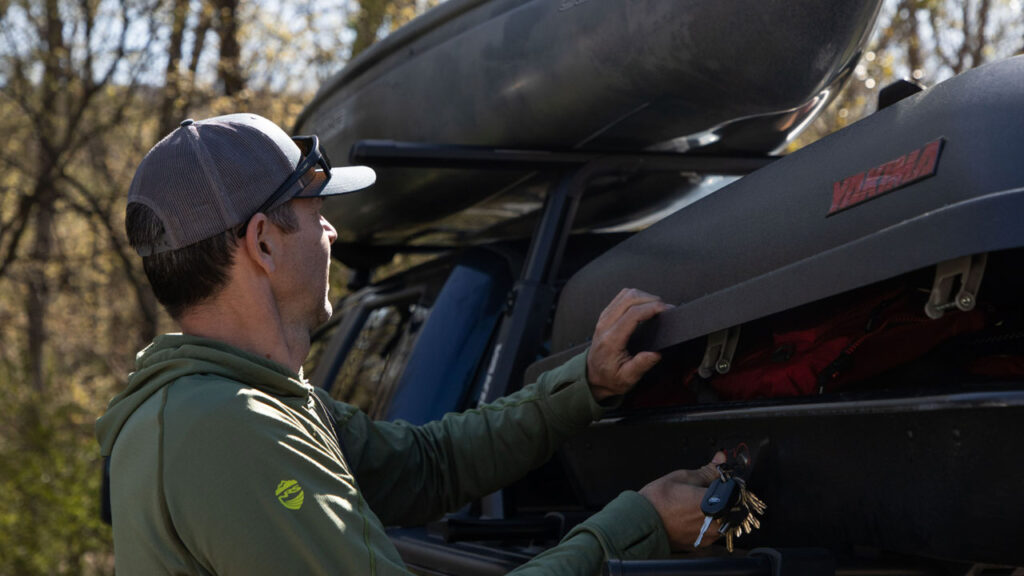
The Layers Underneath
What matters just as much as the shell you are wearing, is what you are wearing on the inside. This is where layers make a really big difference. Instead of wearing one big layer that cannot be adjusted, I would highly recommend wearing a variety of layers.
The Base Layer
I use a silk-weight top whether it is warm or cold, as a base layer. That is because it wicks moisture and sweat very well. But I also have a microfleece one suit that works amazingly under a dry suit. It is a bit more of an insulating layer but can be worn as a base layer, or over the top of another base layer.
There is no right or wrong number of layers to wear. The key thing is that you want your base layer to wick moisture away from your body. Even if you wear a dry suit you will still be sweating, so you want this moisture to be pulled away from the body to keep you warm.
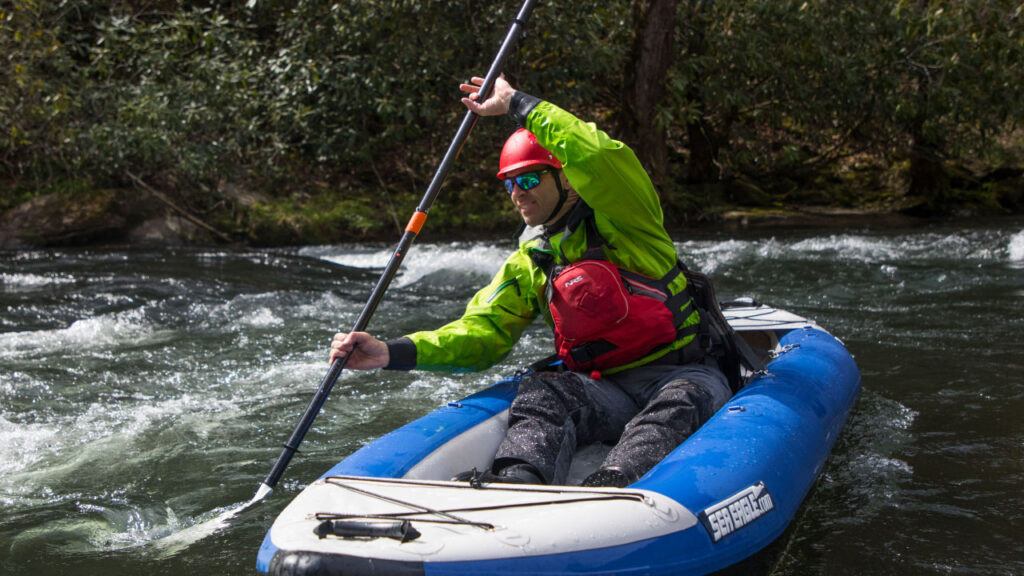
The Second and Third Layers for Cold Water Kayaking Gear
The second layer has to be to provide more insulation and more warmth. You may need a third layer if it is too cold. I find two layers are typically enough for kayaking, keep you warm, and don’t reduce your mobility.
If you do not have a dry suit, which is very expensive, a wetsuit is another option. You can get wetsuits that are quite thick and will keep you warm in really cold water. They do it by insulating you when you are wet. The key is to get a fully form-fitting wetsuit so that there isn’t space between the material and your body.
I personally don’t like using thick wetsuit tops as much because they reduce your mobility up top. Down below, where you need less mobility, they make a lot more sense. By combining a dry top and wetsuit bottoms you can get cold water protection in a more affordable way.
Otherwise, on the bottom half, you can use the same idea as with the tops. You need a moisture-wicking base layer and then an insulating layer topped off with an outer shell.
What about the exposed parts of your body?
Foot Protection
Your best option for cold water kayaking gear is neoprene boots or booties because they insulate when wet.
I have been using the NRS Boundary boot for a couple of decades now in really cold conditions. This is fully waterproof as well as insulating. For the coldest trips, you can even wear a neoprene sock inside of these.
When things aren’t as cold, a simple neoprene bootie will do the trick. You can choose from high cut, low cut, and everything in between. They might not be the best-looking shoes, but they certainly do the job.

Hand Protection
There are a few options for hands. What I use the most are pogies. These wrap around your paddle, and then you put your hand inside. That means you can easily take your hand out. Pogies keep the wind and splash off, and are insulating, but do not keep your hand dry.
Although they aren’t nearly as warm as a glove or a mitt, I really like pogies because your hand stays on the paddle. You get to keep a lot more paddle dexterity and control – ideal for someone who loves paddling in rough waters like me.
If you don’t need that same level of control, you might want to get some handwear that provides an extra level of warmth. And that is where paddling gloves come in handy. Something like the NRS Hydroskin gloves provides a great layer of insulation when you are paddling. These are not thick so you still have a similar feel when you are paddling, but it is not the same as having your hand directly on the paddle though.
For a little more insulation, you can get thicker wetsuit gloves that provide more and more protection. Some of these have great design features like slits in the finger which allow you to pop your fingers out to maintain contact with the paddle at least with your fingers. It also allows you to do things like use your phone or fish.
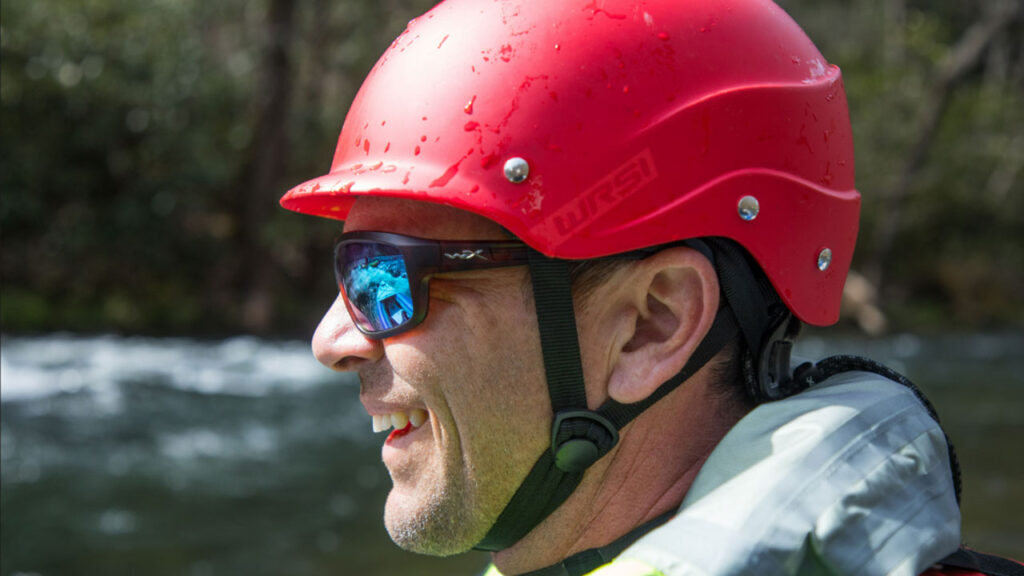
Head Protection
We’ve all heard that you lose a lot of your heat through your head. And so it makes sense to wear something. For most people, a tuque (a beanie) is the best protection. If you want a bit more protection you can get a paddling top with a hood.
But if you are paddling in rough conditions and need something a little warmer, there is neoprene headwear that is form-fitting and tight to your head. It can even almost be like a balaclava. For white water paddlers, the helmet can also provide some warmth too.
As a final note
I’ve talked here about what to wear whilst out on the water. But very briefly, let's end with what not to wear. And that is cotton. Cotton does not insulate at all when it is wet. In fact, it tends to do the opposite and suck heat from your body. So if you are wearing paddling tops, do not wear cotton underneath.
In warm conditions, cotton might keep you cool, but when it is wet it tends to cling to you. So you might be cool, but you won’t be comfortable!

Watercraft: Sea Eagle 300,
Paddles: Aqua Bound Manta Ray Hybrid,
PFD: NRS Odyssey PFD (Touring and Rec), NRS Chinook (fishing), NRS Zen (Whitewater),
Clothing: NRS Short Sleeved Guide Shirt, NRS Axiom Dry Suit, NRS Riptide Splash Jacket,
Helmet: WRSI Current Helmet,
Footwear: NRS Kicker Remix Shoe, NRS Boundary Boot,
Sunglasses: Wiley X



